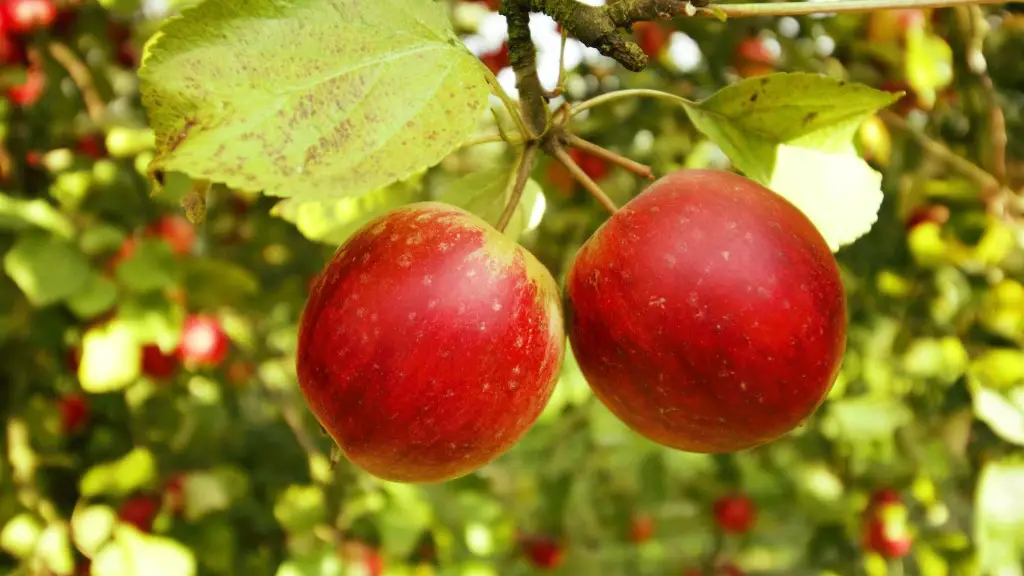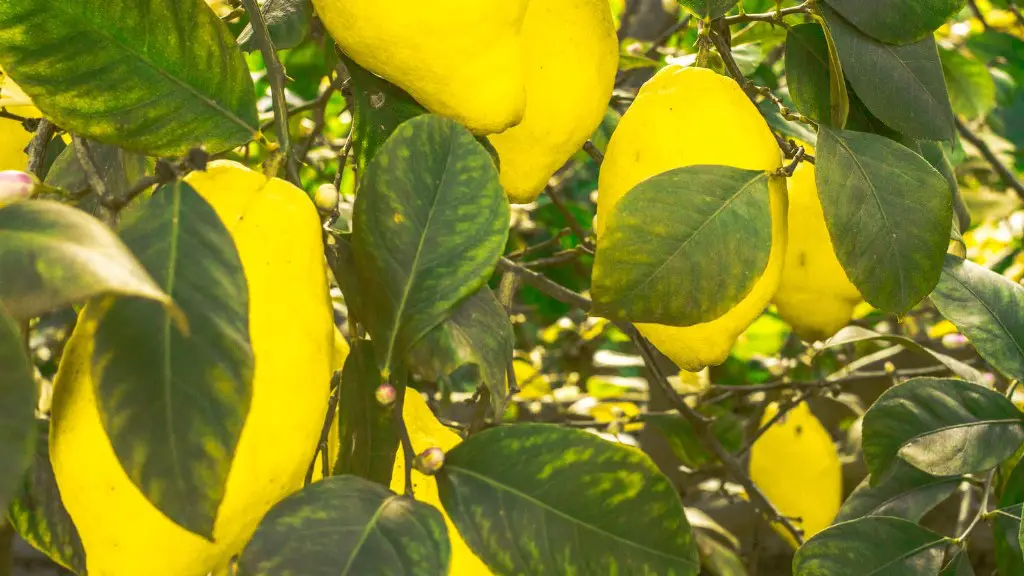Starting a lemon tree from lemon seeds is a rewarding project. It is possible to create a citrus tree that will bear sweet and juicy lemons with just a few seeds and a bit of know-how. Here’s how to get started.
First, prepare the lemon seeds for planting. Soak the seeds in lukewarm water for 24 hours. This will help to remove any germination inhibitors such as an outer coating or interior compounds. Next, sterilize the seeds with a diluted bleach solution. Place the seeds in a dropped of 1-part bleach to 10-parts water for 15 minutes. Rinse the seeds after the treatment with running water.
After the lemon seeds are prepped, fill a seed-starter tray or pot with moist, quality potting soil. Punch small holes into the soil and insert the seeds. Cover the holes with soil and lightly press down to make sure they’re firmly in place. Water the soil until it’s damp and then place the tray or pot in direct sunlight.
The lemon tree seedling will start to appear above the soil in approximately two to three weeks. Water the seedling when the soil is dry and ensure the soil is acidic. Use an acidic garden fertilizer like Miracid or Yates Dynamic Lifter Soil Improver & Plant Fertiliser. Apply the fertilizer according to the instructions on the package.
As the seedling matures, transfer it to a larger pot so it can continue to develop. Use a potting mix specifically for citrus and make sure the pot is large enough for the root system to expand and continue to grow. Keep the soil moist but be careful not to waterlog the pot.
Finally, transplant the lemon tree outdoors to a sunny, sheltered area with well-drained soil. Monitor the tree for signs of pests and disease, and continue fertilizing it both during the winter and summer months.
Expanding on the topic
When the lemon tree is established, prune the tree in late winter to control its size and shape. Aim to maintain an open vase structure to promote good air flow around the tree. Regular feeding during the growing season will ensure the tree produces lots of lemons.
When the tree starts to bear fruits, it’s important to thin out the crops before they fully mature. This will ensure they reach their maximum size and colour. Thinning can be done by cutting or hand-picking the immature fruits. Always use a sharp knife and cut close to the junction with the stem.
It’s also important to remove branches that are diseased or dead. Use pruning shears and cut off the end of the branch back to just before the point of infection. Similarly, branches that rubbed together should also be trimmed. This will prevent any further damage from occurring.
When the leaves start to yellow, it’s a sign that the tree needs more magnesium. Create an Epsom salt spray by mixing 1.5 tablespoons of Epsom salt with 4 litres of water. Apply the spray evenly over the leaves and stem using a spray bottle 2–3 times during the growing season.
Finally, ensure the tree is adequately watered during dry periods. Over-watering can cause the plant to rot, while under-watering can lead to leaf curl and slower growth. Using a moisture meter can be helpful to check the moisture in the soil.
Harvesting
When the lemon fruits are ready for harvest, use sharp pruners to cut them from the tree. Look for fruits that are full size, glossy and fragrant. Store unripe fruits in a cool, dry place and monitor them until they are fully ripe.
When it comes to storing the ripe lemons, they can be kept in the fridge for up to two weeks. Alternatively, you can place them in a sealed container and freeze them for up to four months. Finally, if you plan to use the lemons for juice, freeze the juice in ice cube trays and store it in a zip-lock bag.
Pest control
Lemon trees are often affected by various types of pests, including aphids and mealybugs. For a natural, non-toxic solution, mix a few drops of dish soap into a quart of warm water and spray the solution directly onto the pests. Repeat this weekly until the pests are gone.
For a stronger solution, mix one part rubbing alcohol with three parts water and spray on the pests. However, this solution should never be used on small, young citrus trees as it can cause damage to the leaves.
Finally, attracting beneficial insects to your garden is a great way to reduce the number of pests invasions. Ladybugs, lacewings and other predator insects help to keep the lemon tree healthier. Introduce them by planting a flower bed near the lemon tree.
Disease control
The most common diseases in a lemon tree are fungal infections such as citrus canker. This disease causes brown, sunken lesions on the trees’ leaves and stems. To prevent this disease, always plant your lemon tree in well-drained soil and avoid over-watering.
If there are signs of disease, prune off the branches or stems with the diseased parts. Dispose of the clippings away from the lemon tree to prevent the disease from spreading. If the infection is severe, use a fungicide according to the instructions on the package.
Leaf curl is another common disease in lemon trees and it’s caused by excessive watering. To treat the infection, stop watering the tree and wait for the soil to dry out. Once the soil is dry, start watering the tree, but be careful to not over-water it.
If the tree is showing signs of calcium deficiency, use a fertiliser containing boron or foliar feed with a calcium supplement to help the tree recover. After two or three weeks, the symptoms should start to ameliorate.
Pollination
Lemon trees are self-pollinating and rely on wind and insects to pollinate their flowers. To ensure pollination, introduce bee and/or butterfly-friendly plants near the lemon tree and ensure there is plenty of water available.
The lemon tree can also be pollinated manually using a soft paintbrush. Gently brush the centre of each flower and then move onto the next one. This process should be repeated twice to ensure pollination.
If the tree fails to produce fruits, it may be a sign that the temperature is too low. Citrus trees need a temperature of at least 15°C (60°F) to set fruits. If necessary, move the tree to a warmer area or use a greenhouse to increase the temperature.
Finally, once the flowers have set into fruits, you can thin the crops by cutting off some of the fruits with a sharp knife. This will ensure the remaining fruits grow to the size they were intended.


